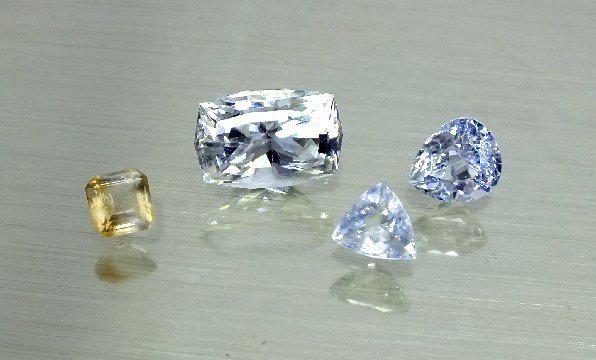 |
|||
| 1.55ct | 9.23ct | 1.09ct | 2.78ct |
| Brumado, Bahía, Brazil | Eugui, Spain | ||
��D�E���_�@�iDolomite�j
 |
|||
| 1.55ct | 9.23ct | 1.09ct | 2.78ct |
| Brumado, Bahía, Brazil | Eugui, Spain | ||
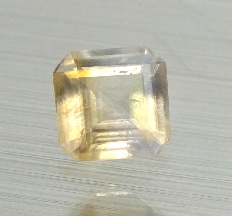 |
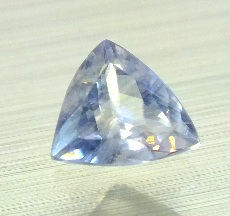 |
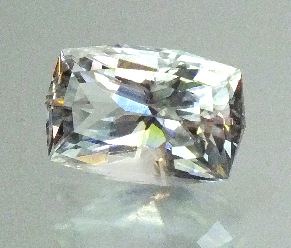 |
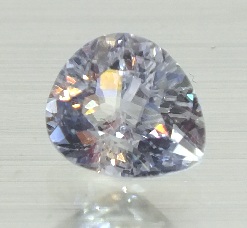 |
| 1.55ct 8.4x8.4mm | 1.09ct 6.4x6.4mm | 9.23ct 15.4x10.3mm | 2.78ct 10x8.9mm |
| Brumado, Bahía, Brazil | Eugui, Spain | ||
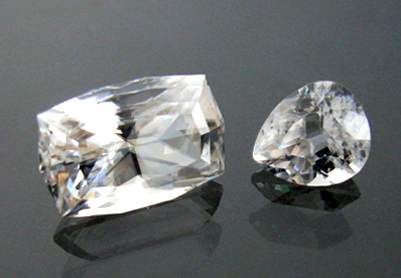 |
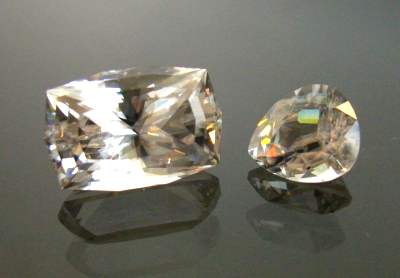 |
| ��D�� (Dolomite)�@9.23ct (Brumado, Brazil) and 2.78ct (Eugui, Spain) | |
| ���R��(Daylight) | ���M��(Incandescent light) |
�@
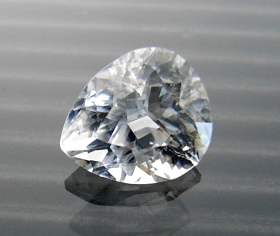 |
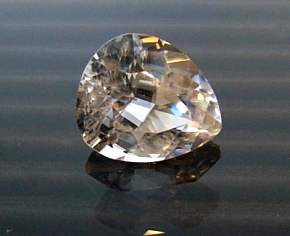 |
| Dolomite 2.78ct 10x8.9mm | |
| ���R���iDaylight�j | ���M���iIncandescent light�j |
| Eugui, Spain | |
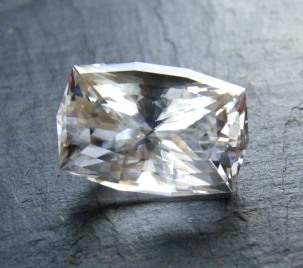 |
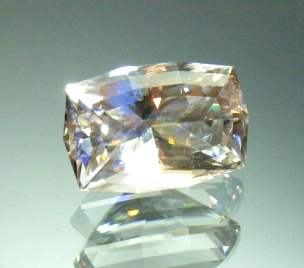 |
| Dolomite 9.23ct 15.4x10.3mm | |
| ���R���iDaylight�j | ���M���iIncandescent light�j |
| Brumado, Bahía, Brazil | |
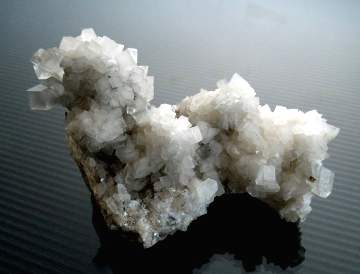 |
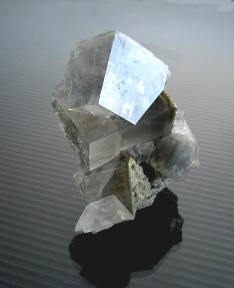 |
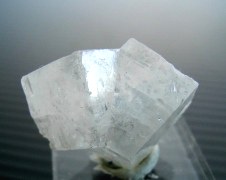 |
| ��D��(Dolomite) 9x6x4cm | ��D��(Dolomite) 5x6x3cm | ��D��(Dolomite) 3x2x2.5cm |
| Eugui, Navarra, Spain | Luzenac, Ariège, France | |
| ���w�g�� (Formula) |
�����n (Crystal System) |
���[�X�d�x (Hardness) |
��d (Density) |
���ܗ� (Refractive Index) |
������ �iBirfrengence) |
| CaMg(CO3)2 | �O�����n (Trigonal) |
3½ - 4 | 2.85-95 | 1.50-68 | 0.18 |
���O�ƎY��(Name, Origine and Occurence)
�@�h���}�C�g�̖��O�̓t�����X�E�A���v�X�A�h�[�t�B�[�l�n���̃h���~���[���܂�̒n���E�z���w�ҁA�h���~���[(Dolomieu:1750-1801)�̖��Ɉ��݂܂��B�J�̎����ł̓h���~���[�̓C�^���A�k�����̃h���~�e(�C�^���A��ł͕����Ȃ̂� Dolomiti�ł����A�����D����Ӗ�����j�R������āA�Y�_�}�O�l�V�E���E�J���V�E�����琬�����ނ̖��Ɉ���Ŗ��Â���ꂽ�Ƃ���܂��B�@�ނ̖��ƒn���Ƃ͋��R�̈�v�Ȃ̂��H�@
�@���{���̋�D�͎听���ł���}�O�l�V�E���i��y�j�ƃJ���V�E���i�D�j�Ƃ̒Y�_���Ɉ��݂܂��B
�������O�ς��甒�_�ƁA�T��ȕʖ��ŌĂ�邱�Ƃ�����܂��B
�@�h���}�C�g�͎�ɊC��ɑ͐ς����ΊD�₪�}�O�l�V�E���ɕx�ޔM���̊ѓ��ɂ�����p���Đ���������ł��B
���̌�嗤�ړ��Ȃǂ̒n�k�ϓ��ɂ��Ⴆ�h���~�e�R��̂悤�ȋ���ȎR�����`�����܂��B
�@���������ċ�D��͐����̎����H��y���ΊD��Ƌ��ɐ��E���̎���Ƃ���Ŕ�������邲������ӂꂽ�z���ŁA�Z�����g�ށA�}�O�l�V�E�������p�C�܂��͐��S�p�ωޓ��Ƃ��č̌@����܂��B�܂��Ζ���V�R�K�X�����n���̋�D���ΊD��̑w�̋�Ԃɑ͐ς��ꂽ���̂ł��B
�@�܂����A����Ȃ���ӂꂽ�z������ɂȂ�Ƃ̓��������v�������܂���ł����B
�ʐ^�̗l�Ɏ����Č��f���̂��Ȃ��ł͂���܂����A�t�@�Z�b�g�E�J�b�g�o����悤�ȕ���̌������H�ɍ̂��̂ł��B����������Γ��l�ɍ��������܂̂������Ŕ��M�����ł̓_�C�A�����h�̂悤�ȓ��F�̃t�@�C�A�[�������Ȃ��Ȃ��̔��������_�Ԍ����Ă���܂��B�c�O�Ȃ��烂�[�X�d�x���Ⴍ�A���̏㊮�S�ș��J���ɂ��Ռ��Ɏキ�������ϋv���Ɍ����邽�ߕ�Ƃ��Ďg���܂���B
�@��Ƃ��ăJ�b�g�\�ȁC�傫�������Ȍ����͂��Ă̓X�y�C���E�G�E�M�z�R�����E�ŗB��̎Y�n�ł����B
�ߔN�͋H�Ƀu���W���A�o�C�A�B�̃u���}�[�h�̕H��y��̏������Ɍ������������ȋ�D�̌������J�b�g����邱�Ƃ�����܂��B�@����ɃC�^���A�C�h�C�c�C�X�C�X�C�t�����X�Ȃǃ��[���b�p�E�A���v�X�̔M�����z���Y�̌����ɂ͕���Ƃ܂ł͍s���Ȃ��Ƃ��A���������̂������܂��B�@
�@
�@The name, dolomite derives from French geologist/mineralogist Dolomieu(1750-1801), who studied the geology of Dolomite Massif of northern Italian Alps. Much sedimentary dolomite has resulted from the action of magnesium-bearing solutions on pre-existing sediments, either soon after their deposition or much later, when they had become rock. Some less extensive deposits, however, are primary evaporites. Metamorphic events may recrystalize both types to dolomite marble. Hydrothermal veins can contain good crystals of dolomite in association with metallic ores, and similarly calcite, it has been found in igneous rocks to a greater(in the rock beforsite) or lesser extent.
�@It is a surprise that such common mineral could be facetable as gemstone. Despite low refractive index, faceted dolomite shows diamond like fire under incandescent light. However, perfect cleavage and low hardness are fatal for dolomite to be a practical gemstone. In addition, gemmy dolomite crystal are extremely rare and a mine near Eugui, Navarra, Spain has long been the only one locality, til magnesite pocket of Brumado, Bahia, Brazil began to rarely produce transparent crystal, recently. But some localities in Alpine-type hydrothermal vein produces pretty crystals, although not gemmy.
�X�y�C���E�G�E�M�̕H��y�z�z�R�iMagnesite ores of Eugui, Spain�j
�t�����X�����ɋ߂��z�R
Location near
French Boarder�����̍̍z���@1988
Western quarry�[���r�ƂȂ���
�����̍̍z��
Eastern quarry 1988���݂̍̌@���i�@(Present mining)
�G�E�M�Y��D�Ό���(Eugui Dolomite crystals) 1967�N�ɔ������ꂽ��D�Ό����Q(Dolomite crystal group found in 1967) ��(across)�@45cm�@
Sorbonne collection since 1987, Paris
�����Ȍ���(Transparent crystal) 33mm �o��(Twin) 7cm ����(crystal) 6cm Sorbonne collection, Paris Museu Mollfulleda de Mineralogia
Arenys de Mar, Barcelona, Spain
�@�X�y�C���A�s���l�[�R���̃t�����X�����ɋ߂��R���̃A���K�여��ɏ��x�̍����Y�_�}�O�l�V�E�����琬��H��y�z�̍����������ꂽ�̂�1945�N�̂��Ƃł����B���̌�̒ǐՒ����ɂ���ɕH��y�z���琬�����180���̒Y�_���z������������܂����B�n�z�F�̑ωΗ����ނƂ��č̌@�����H��y�z�̖����ʂ�30�`60�N���Ɛ��肳��A���݂��N��50���g�����̌@����Ă��܂��B
�@���̍z�R��������E�ɍ������̂́A�������H��y�z�ł͂Ȃ��ő�ł�20cm�ɂ��B���錩���ȋ�D�̌������[����������ȏ����̔����ł����B
�@�����͓�����̍L����50�u�A�[����20m�̑傫���ŁA�z�R�̊J�����w��������C�z�R�Z�t�t�A���E�R���h�o�ɂ���Ĕ�������܂����B
�@�������ߐs�����������͂��̉��l���ɔF�������R���h�o�ɂ���Ē��d�ɍ̌@����A�W�{�Ƃ���1965�N�ȍ~�A���E�̔����ق�R���N�^�[�ɔ̔�����܂����B1970�N�̃R���h�o�̎��㌋���̋����͋}�����A1980�N�ȍ~�V���ɔ������ꂽ�����͕\�ʂ��������Z�I����Ă�����S��}���K���_�����̎K�ŕ����Ă�����ƁA�ȑO�̌����Ɣ�ׂ�ƒ������i�����ቺ������̂���ł����B����������V���ȏ��������̉\���͎c���Ă��܂��B
�@���s���l�[�R���̌Ð���(2.25-5.7���N��)���ɘI�o���邱�̍z���̐����͖��炩�ł͂���܂���B���A������ł�������D�̑͐ϑw�Ƀ}�O�l�V�E�����ɕx��350���ȉ��̒ቷ�̔M�����ѓ����Č���p���N����A�������ɋ���ȋ�D�̌��������������Ƃ����̂��ŐV�̐��ł��B����̓u���W���E�o�C�A�B�A�u���}�[�h�̃}�O�l�T�C�g�z�R�̗�Ƃقړ��������ƍl�����܂��B�@Magnificent dolomite crystals from quarries near Eugui, Navarra, Spain, first reached the mineral market around 1965, and were inmediately hailed as new "classics." It was in 1945 that an unusual discovery was made along the Arga River near Eugui, Navarra, Spain . It was found that the river sand was composed mainly of the mineral magnesite, MgCO3. Following the detailed survey and beds of magnesite were discovered along the southwest bank of the river. Quarrying operations under the direction of Chief Engineer Juan Cordoba encountered large, crystal-filled pockets measuring up to 50 meters square and 20 meters deep. Fortunately, Cordoba recognized the great mineralogical value of the beatutifully crystallized domomite, and took steps to preserve a large number of specimens. These he sold to major museums throughout the world and also to private collectors, beginning around 1965. Following Cordoba's death in 1970, the supply of specimens quickly diminished. The quality of recent material is inferior to that of the old specimens preserved by Cordoba; the crystal faces tend to be frosted, are sometimes more deeply corroded, and are usually stained by iron and manganese oxide. However the quarries are still active to produce with annual production of 500,000 tons of magnesite ore, mainly for furnace brick production. Consequently it is still possible that new pockets will be encountered.
�@The magnesite-dolomite deposit crops out in the Paleozoic rocks of the Western Pyrenees. The origin of the carbonate units reaching a thickness of 180 meters is still unclear. One hypothesis suggests direct precipitaion of magnesite in a lagunal environment. And a more recent theories suggest a metasomatic origin in which original dolomitic sediments are replaced by magnesite through the action of Mg-rich hydrothermal fluids . A period of partial re-dolomitization is said to have followed, resulting in the formation of large pocket of dolomitic crystals.
��D�̑����i�iDolomite used as ornamental stone�j
�@ �t�@�Z�b�g�E�J�b�g�ł���悤�ȓ����ȃh���}�C�g�����͑�ϋH�ł����A���E���ɂӂ�ɂ���h���}�C�g�̒��ɂ͔������F������͗l�������̂�����A�����i�Ƃ��ĉ��H����邱�Ƃ�����܂��B
�@Although facetable dolomite is quite rare, ornamental dolomites with attractive colors and patterns are found in some of the abundant world's ores.
�[�u���E�}�[�u��(Zebra marble) 548ct and
�[�u���E���b�N�@(Zebra rock) 29ct�P�C�}���̃r�[�Y�ƃJ�{�V����
Caymanite beads and cabochons���s�X���Y���͑��i
Lapislazuri immitation�u���b�N�E�r�[�Y
Dyed balck bead 25x15mm
�[�u���E�X�g�[���ƃ[�u���E���b�N�iZebra marble and Zebra rock�j
�@�V�}�E�}�̂悤�Ȗ͗l�������߂Ɂh�[�u���E�X�g�[���h�ƌĂ����A�����J�E�R�����h�B�̃��[�h���B���ɎY���܂��B�ʐ^�̋��̓I�[�X�g�����A�Y�̃[�u���ł����A���������D�Ƒ嗝����Ȃ�ł��B���������͑��Â̒n���Ɍ������ɂ���Ď_�f�������炵���X�g���}�g���C�g�ƌĂ�鑔�ނ̗t�̉��ΐ������Č����������̂ł��B
�@�O�p�`�̂Q�F�͓̐��l�Ƀ[�u���E���b�N�h�Ƃ��Ĕ����Ă��܂����A����͌]�_���ɕx�ޓD��̈��ŐԖ���тт��Ȃ̕����͐ԓS�z�ɕx�ދK���I�Ȓ��a���Ɉ���Ƃ̂��Ƃł��B�I�[�X�g�����A�k�����̓��L���o���[�n���̌����㏉���i10���N�O�j�̒n�w�ɔ�������܂��B
�@So called "Zebra stone" has been reported from Leadville, Colorado, the white bands formed with precipitated dolomite with dark gray stromatolite ooze that has been recrystalized. Similar stone was found in Australia and sold as "Zebra marble". The second ornamental gem material, offered as "zebra rock" is actually not dolomite, but is a fine-grained siliceous argillite, which is a clay-or mud-containing sedimentary rock with darker bands colored by the presence of hematite. It is from an Upper Proterozoic deposit in the East Kimberley region of Western Australia.
�P�C�}���iCaymanite)
�@�J���u�C�̃P�C�}�����̈ꕔ�ō̂�������i�Ƃ��ĉ��H����"�P�C�}���h�Ƃ��Ďs��ɏo�Ă��܂��B�����͂��������ɋ�D�̔������̖��邢�����Ɛ������̈Â������Ƃ����荬���薣�͓I�Ȗ͗l��������ł��B
�@A banded stone of dolomite, the darker orangy brown layers are microcrystalline, while the lighter, cream color layers are cryptocrystalline, called as "Caymanite, found only on the eastern end of Grand Cayman and Cayman Brac., Cayman Islands, Caribean is now fascioned as ornamental stone.
���s�X���Y���͑��i�iDyed dolomite as Lapislazuri immitation
�@�ʐ^�̂Wmm�a�̃��s�X���Y���E�r�[�Y�̂悤�ȃl�b�N���X�̓n�E���C�g�iCa2B5SiO9(OH)5�j�Ƃ��Ĕ����Ă������̂ł����A���ׂ�Ǝ��͋�D�̃r�[�Y�ł������ƌ����A��ς��e���ȃC�~�e�[�V�����̈��B�n�E���C�g�͕��ʁA���邢��F�ɐ��F����ăg���R�̖͑��i�ƂȂ�܂��B
�@A strand of attractive 8-mm blue beads that resemble lapis-lazuri and were sold as dyed howlite(Calcium Boro-silicate Hydroxide), which is in general dyed in a turquoise blue, is found actually dyed dolomite.
�����]����D�iBlack quartzite and dolomite�j
�@ �����F�̕���͂��Ă͂����ς烂�[�j���O�E�W���G���[�i�r���p�j�Ƃ��Ďg���܂������A�ŋ߂͂������ȐF�Ƃ��Ĉ��p�����悤�ɂȂ��Ă��܂��B�m���Ƀf�U�C������ł͍����V�N�Ɍ����܂��B�����F�̕�̓W�F�b�g�i�Y���j�⒅�F�������킪��Ɏg���܂��B�ʐ^�̍����r�[�Y�͌]������܂ދ�D���������F�������̂ł�
�@Currently black is fashionable and, thus, there is a demand for jewelry with black gems. Jet and dyed chalcedony has been traditionally used as representative black gems. However, a black bead in the photo is a dyed fine grained dolomite with some quartzite.
Top Gemhall �@
�@